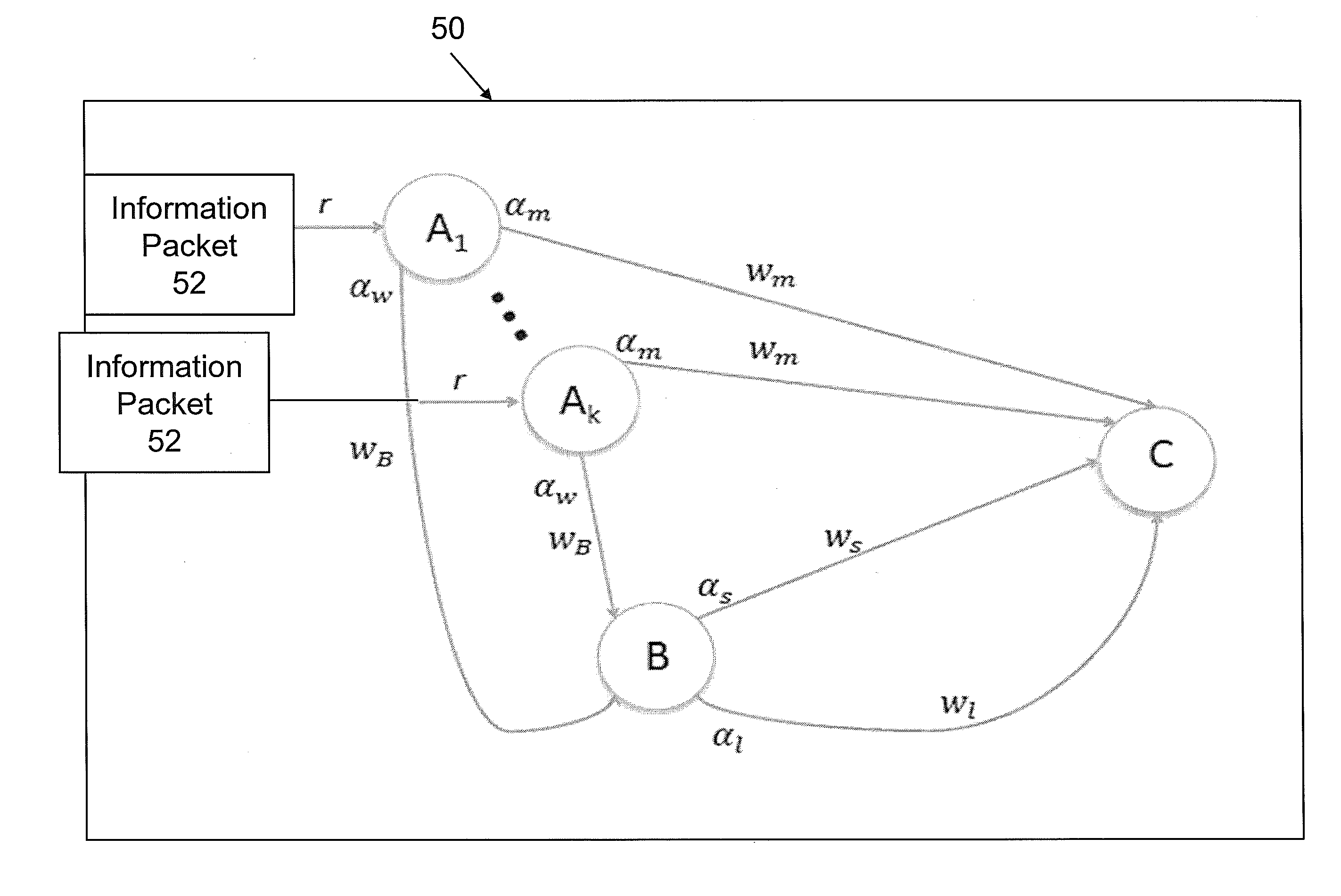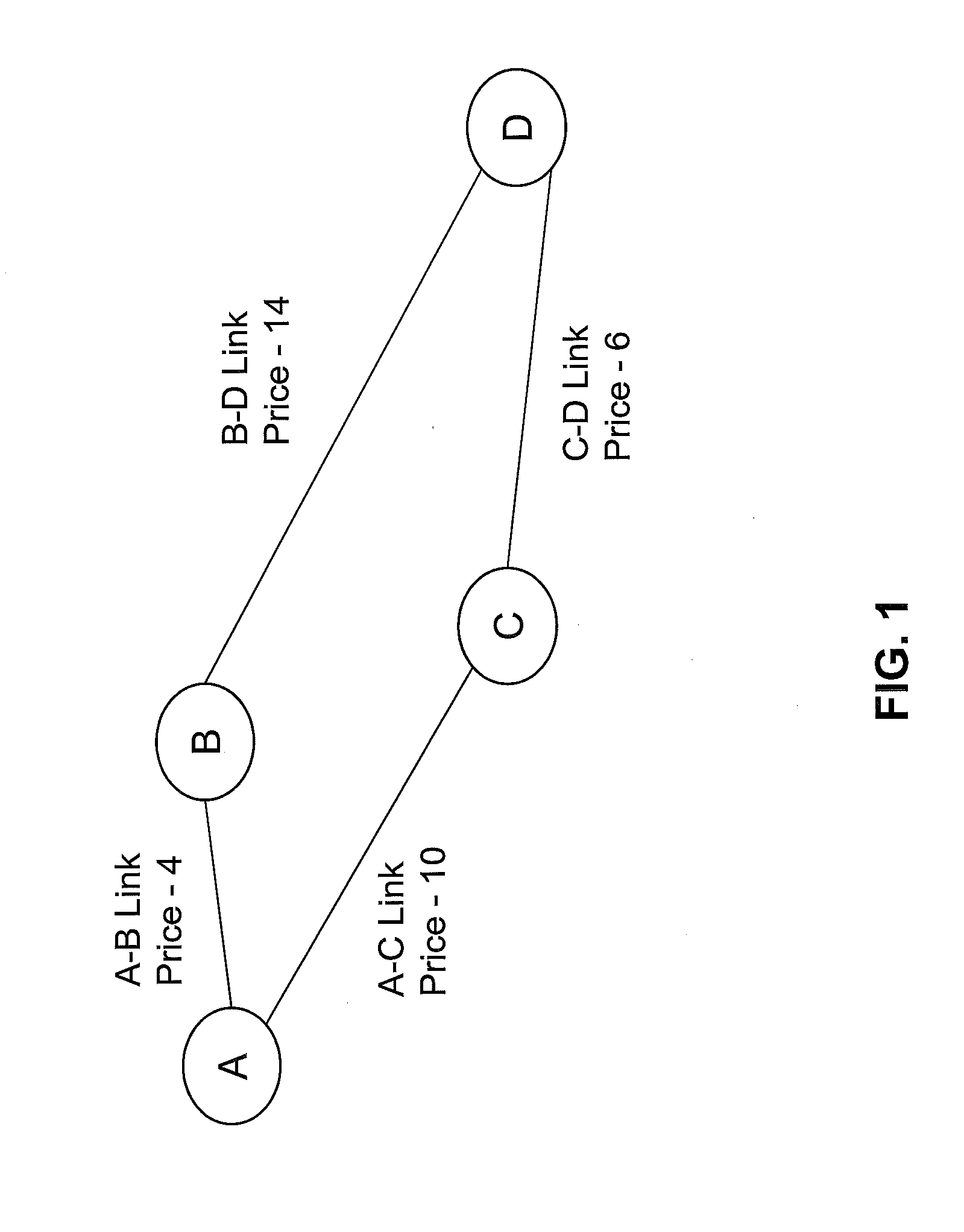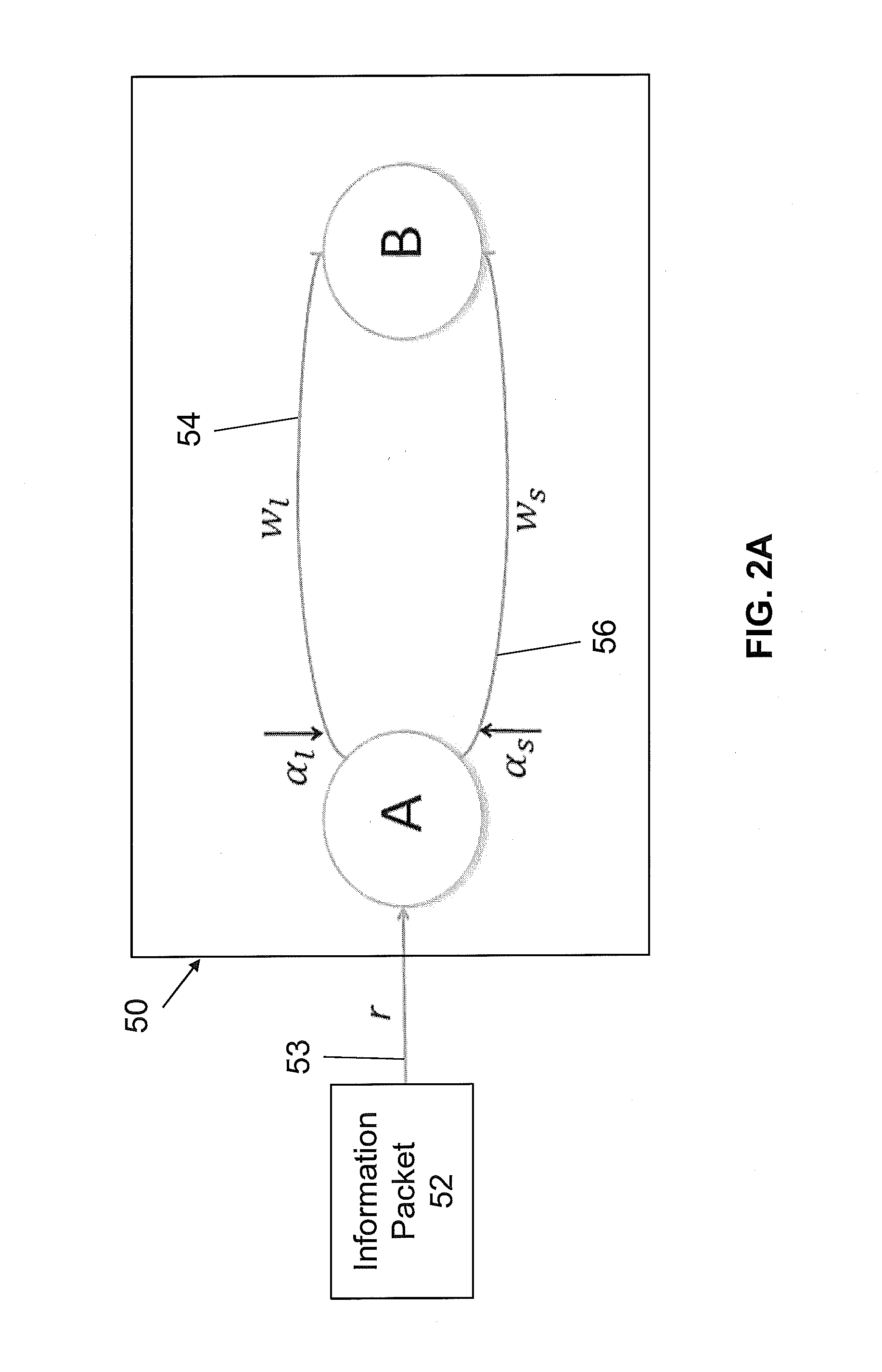System and methods for improved network routing
a network routing and system technology, applied in the field of routing items, to achieve the effect of facilitating easy transition and scalability
- Summary
- Abstract
- Description
- Claims
- Application Information
AI Technical Summary
Benefits of technology
Problems solved by technology
Method used
Image
Examples
Embodiment Construction
[0092]The question of how to route information packets through an electronic data network can be defined more generally as a multi-commodity flow (“MCF”) problem. For a given directed graph, G=(V,E) with node / router set V and edge / link, set E with link capacities cu,v; ∀ (u,v)εE, and demands D(s,t) defined as the rate required for communication from s to t, the MCF problem can been summarized below.
minfu,vtΦ(f)s.t.∑v:(s,v)∈fs,vt-∑u:(u,s)∈fu,st=D(s,t),∀s≠tfu,v=∑t∈fu,vt≤cu,v,∀(u,v)fu,vt≥0
[0093]Commodities are defined in terms of their final destination t. fu,vt is the flow on link (u,v) corresponding to commodity t and fu,v is the total flow on link (u,v). The cost function, Φ, is typically selected to be a convex function of the link rate vector f={fu,v}, ∀ (u,v)εE. For example, if the M / M / 1 delay formula is used for the cost function, then Φ (f)=Σu,v Φu,v (fu,v)=Σu,v fu,v / (cu,v−fu,v). Throughout this application, this cost function will be used unless specified otherwise. It is also...
PUM
 Login to View More
Login to View More Abstract
Description
Claims
Application Information
 Login to View More
Login to View More - R&D
- Intellectual Property
- Life Sciences
- Materials
- Tech Scout
- Unparalleled Data Quality
- Higher Quality Content
- 60% Fewer Hallucinations
Browse by: Latest US Patents, China's latest patents, Technical Efficacy Thesaurus, Application Domain, Technology Topic, Popular Technical Reports.
© 2025 PatSnap. All rights reserved.Legal|Privacy policy|Modern Slavery Act Transparency Statement|Sitemap|About US| Contact US: help@patsnap.com



